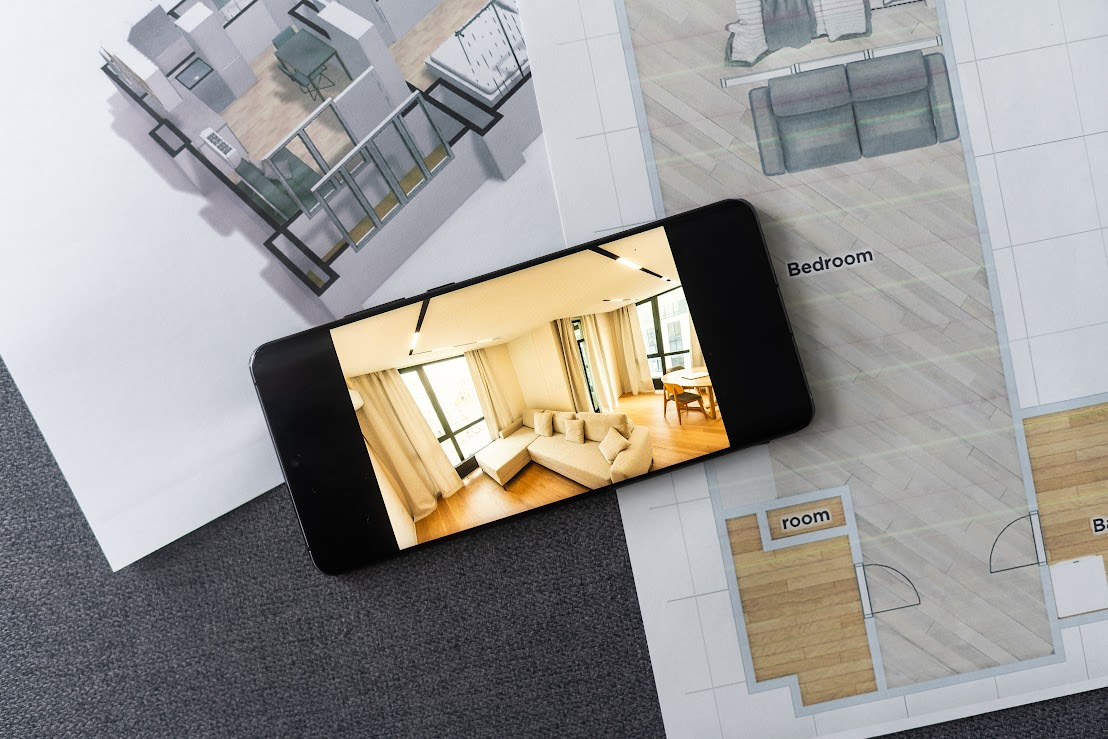Commercial teams require tools that quickly reveal real conditions, and interactive floor plans provide the necessary support with clear insights. Many older buildings can confuse owners due to unclear layouts, but digital maps provide accurate details to correct these issues. These platforms guide decisions tied to planning, leasing, and operations, and they help teams refine space with steady confidence. The right system brings clarity to daily tasks and supports strong outcomes across complex commercial properties.
How Interactive Floor Plans Improve Commercial Space
Interactive floor plans enhance commercial spaces by revealing how each room performs during daily use and highlighting details that matter to building teams. They uncover layout issues that limit flow and highlight zones that lose value due to outdated design. Additionally, they present a clear context for traffic, assets, and operational needs inside busy properties. This insight enables owners to correct weak areas with confidence and evidence-based decisions. Managers plan updates with greater accuracy because each view reflects real conditions. Commercial spaces function better when teams rely on precise digital information.
How Interactive Floor Plans Boost Space Potential
Interactive floor plans help commercial buildings gain clearer insights into space by showing real conditions that influence daily functions. These tools highlight areas that restrict movement or hold unused potential, guiding teams toward better layout choices. They reveal patterns that owners often miss when relying on outdated drawings. This insight creates a strong foundation for improvements that support long-term building value.
Uncover Hidden Space Potential in Older Buildings
Commercial buildings often contain unused areas that teams overlook, and digital maps bring these zones into clear focus. Users notice flow issues that restrict movement and recognize which spaces lose value during periods of heavy activity. These platforms highlight weak points that older drawings fail to reveal. This level of clarity supports confident planning for more effective space utilization.
Spot Inefficient Use Zones Quickly
Teams identify inefficient rooms as soon as the map loads, and they notice patterns that hinder building performance. They study blocked paths and tight corners that reduce comfort during peak activity. Additionally, they identify storage pockets that waste valuable square footage and adjust roles with confidence. These insights enable teams to direct updates toward areas with the most tremendous impact. People understand real building behavior through each review. Owners build stronger plans with every informed change.
Improve Layout Decisions With Accuracy
Teams adjust layout choices with precision because digital maps display every detail clearly and accurately. They test new room roles and compare scenarios without guesswork. Additionally, each update has an instant impact and guides better decisions based on real-world conditions. These insights support steady growth in overall building performance. Owners refine space with more confidence as they study each layer. Changes move forward with a stable, informed structure.
Reveal Real Capacity Limits Clearly
Teams study capacity counts that reflect real activity and align decisions with accurate use patterns. They avoid overloaded corridors because digital views quickly highlight these weak zones. Additionally, they adjust movement paths during peak hours and reduce stress on high-traffic areas. This guidance improves daily comfort and flow across the building. People move with fewer obstacles as space becomes more intentional. Value rises when capacity aligns with actual needs.
Strengthen Leasing Choices With Clear Building Insight
Prospects respond more quickly when they view clear digital layouts, and leasing teams guide them with confident details. People understand scale and movement quickly because the visuals show real room proportions. Additionally, early clarity reduces the number of questions that delay decisions. This smoother process leads to stronger leasing results across commercial spaces.
Help Tenants Understand Space Fit Fast
Tenants interpret room scale with ease because the visuals display accurate size and flow. They test furniture placement and understand how work may function inside each room. Additionally, they avoid confusion during fast searches because each view remains simple. This clarity helps prospects make decisions with fewer unknowns. Confidence rises when details match real expectations. Leasing cycles move forward with steady momentum.
Coordinate Leasing Teams More Smoothly
Leasing teams can align decisions quickly because everyone shares a single, updated map. They adjust layouts through direct edits and avoid confusion caused by mismatched files. Additionally, every group sees changes instantly and responds with consistent clarity. This alignment reduces friction across lengthy negotiations. Collaboration grows stronger with each shared update. Deals progress faster when everyone works from the same foundation.
Increase Marketing Impact With Clarity
Prospects absorb building details faster when they navigate clean digital views. They explore layout options at their own pace and understand potential without pressure. Additionally, owners present accurate information that builds trust early in the process. This clarity creates stronger first impressions during initial conversations. Prospects feel more certainty with each visual cue. Leasing results improve as clarity drives interest.
Enhance Facility Operations Through Real-Time Detail
Facility teams complete tasks more efficiently when they work with accurate room information and can visualize the equipment located within each space. Digital layers reveal mechanical lines and access needs that older maps fail to show. Issues become easier to track because updated details speak clearly to real conditions. This structure supports stable, predictable operations across busy commercial buildings.
Track Key Assets With Precision
Workers locate equipment quickly because digital markers guide them straight to each item. They avoid confusion linked to unclear drawings and complete tasks with strong efficiency. Additionally, notes stay connected to the correct asset and remain updated across cycles. This consistency creates smoother workflows during routine work. Tasks finish with fewer delays. Records stay organized and reliable.
Guide Maintenance Planning With Insight
Maintenance teams understand access paths clearly because maps show real movement routes. They adjust work plans with grounded information and study mechanical layers that reveal hidden details. Additionally, they avoid surprises that slow repairs and match tasks with accurate room conditions. This clarity supports safer steps during busy periods. Workers complete tasks with more confidence. Operations gain steady improvement across seasons.
Support Safety Teams With Accurate Routes
Safety groups verify emergency paths quickly because digital layers show real access points. They update changes as conditions shift and keep staff informed with reliable details. Inspections become smoother because hazards are clearly visible within each mapped zone. Teams prepare with calm clarity. Checks follow a consistent structure. Safety outcomes improve through every informed review.
Drive Asset Strategies With Reliable Building Data
Asset teams understand long-term building behavior when they study patterns across seasons and compare usage across properties. They identify where space performs strongly and where it declines during periods of heavy activity. This insight shapes more accurate planning for future needs. Owners create stable strategies that support better building performance.
Use Long-Range Trends to Shape Decisions
Teams monitor usage trends to inform future actions and refine plans with substantial evidence. They identify areas that need updates and adjust investments with absolute accuracy. Visual patterns expose bottlenecks that influence budget choices. This insight helps teams avoid costly missteps. Plans feel grounded with every review. Results improve steadily across property cycles.
Manage Portfolio Oversight With Confidence
Managers compare buildings using a single source of real data and study space behavior across multiple sites. They track growth patterns that influence long-term plans and identify buildings that require urgent attention. Unified visuals give teams a reliable view during each review cycle. Decisions form smoothly with a clearer context. Risks are reduced through consistent insight. Owners maintain stronger control across their assets.
Strong Interactive Floor Plan Tools
Teams select tools that align with their actual workflows and offer straightforward functionality across daily tasks. They want smooth controls that load fast and visuals that stay accurate across devices. Additionally, they benefit from systems that adapt as buildings evolve. This approach supports steady growth across complex portfolios.
Key Platform Features
Users access clear scale views that improve planning and switch layers to examine assets or routes. They open maps from mobile devices and adjust plans without confusion. Search tools highlight rooms instantly and guide users through crowded buildings. Each detail strengthens decision-making. Updates remain clear as needs shift. Work stays organized and predictable.
Smart Integrations
Platforms integrate with CAFM, IWMS, and leasing systems, reducing the need for repeated data entry across teams. Users share information that remains consistent across every view, eliminating errors commonly found in disconnected systems. Each change syncs across departments and shapes smoother processes. Teams work with shared clarity. Workflows maintain steady alignment. Data stays accurate across long cycles.
Stability for Long-Term Growth
Owners rely on stable tools that support busy operations and prefer software that updates without disruption. They trust systems with clear interfaces that remain easy to learn. Strong reliability helps teams avoid downtime during critical tasks. Work continues with steady momentum. People trust the platform. Growth follows a consistent structure.
Push Space Efficiency With Interactive Floor Plans
Commercial buildings gain more substantial value when teams rely on clear, real-time insight that guides every space decision. Interactive floor plans give that edge by showing what helps performance and what holds it back during daily use. Owners can move with greater confidence because each choice reflects actual building behavior, rather than assumptions. Now is the moment to adopt tools that keep your property ahead of shifting demands and strengthen results with every informed step.
If you value thoughtful, informed space planning, continue your search for better ideas. The LNE Surveys blog offers fresh perspectives built for commercial properties.











